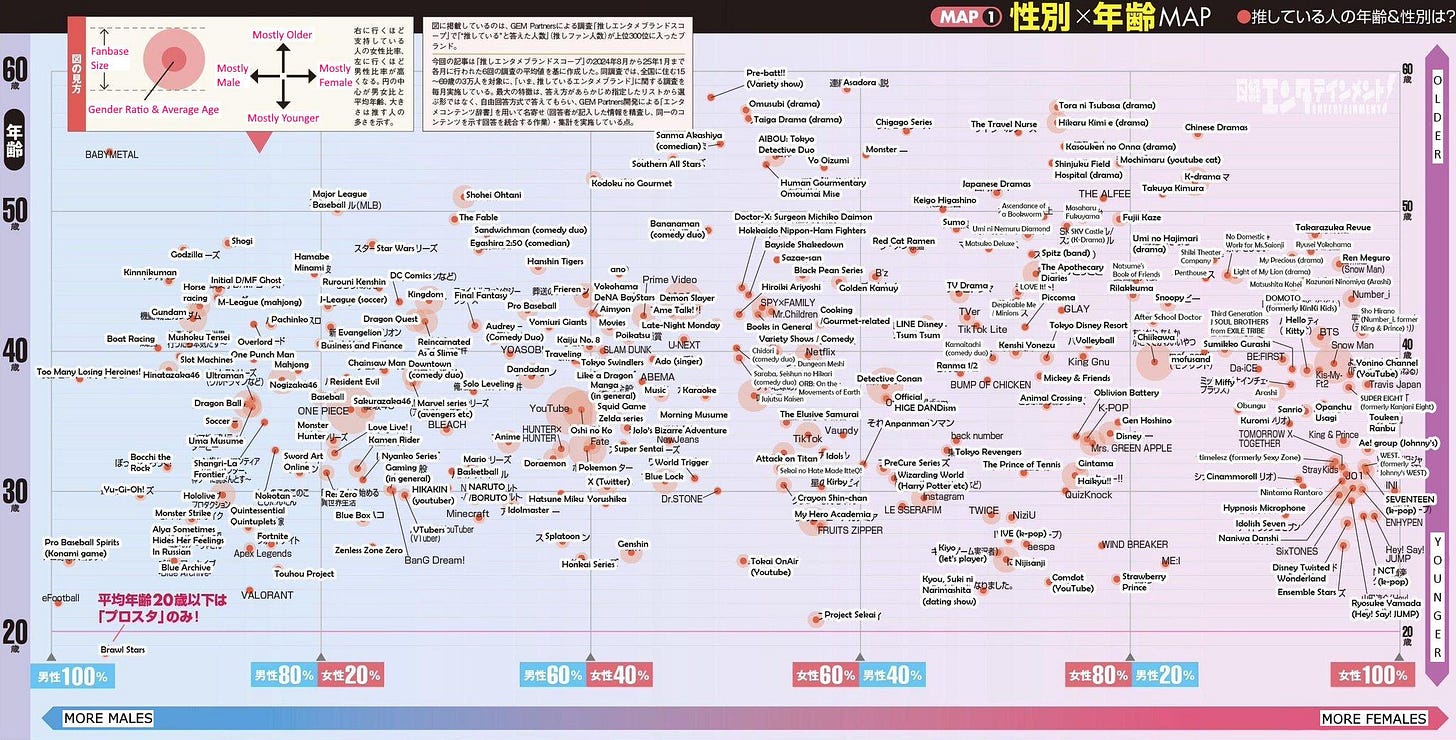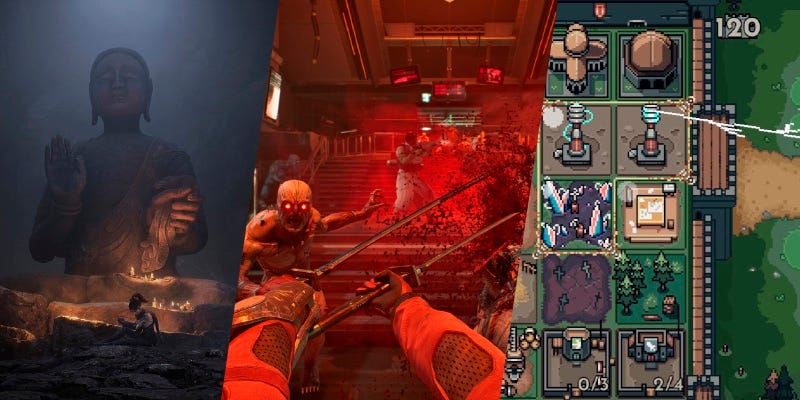[The GameDiscoverCo game discovery newsletter is written by ‘how people find your game’ expert & company founder Simon Carless, and is a regular look at how people discover and buy video games in the 2020s.]
We’re getting to ‘almost the weekend’ here at GameDiscoverCo HQ. So time to bust out a more ‘thought-leader’-y (yuck!) lead story for today’s newsletter, followed by analysis of another busy week for Steam debuts, exclusively for GDCo Pro and Plus subs.
Before we start: for anyone looking forward to the Winter holidays already – that’s all of you, right? – Outright Games just announced a new Elf On The Shelf game for console and PC, debuting in October – clearly aimed at ‘physical sales for Xmas’. (Our view on Elf On The Shelf is summarized by this excellent Stephen Collins cartoon.)
Let’s take a final look for the week at game discovery and platform news, starting with precisely the following:
-
$80 video games in your future? Not so fast, says Xbox, which changed Obsidian’s ARPG The Outer Worlds 2 – originally a $80 release – back to $70, telling Windows Central that they “will keep our full priced holiday releases, including The Outer Worlds 2, at $69.99 – in line with current market conditions.”
-
Looks like Steam has a new video player for game trailers & footage in beta, wahooo. We can see it on the Peak page right now on Steam for web, and it replaces a 2010-era player that some people had skipping and glitching-related issues with.
-
June 2025’s Circana U.S. game hardware (& select software) report has hot Switch 2 news: “June hardware spending increased by 249% [YoY] to $978M… Nintendo Switch 2 sold 1.6M units in June.” That’s the highest launch month for hardware in history, beating 1.1M units of PlayStation 4 sold during November 2013.
-
Two other Switch 2 data points from that Circana report: “The… Pro Controller reached a 32% attach rate to Switch 2 hardware during its launch month… 82% of Switch 2 buyers during June also acquired Mario Kart World either via a physical new game sale or as part of the Switch 2 + Mario Kart World Bundle (excludes standalone digital).”
-
Working out how people discover your games via web search? New Pew research shows that Google users are way less likely to click a link if a search result has the Google AI summary (8% vs 15%), and way more likely to end their browsing session there (26% vs. 16%). Hm – time to start thinking zero-click?
-
Microlinks: Epic is plenty mad that the UK’s CMA isn’t “prioritizing opening the mobile ecosystem to alternative app stores”; China issued official ISBN approvals for 127 domestic games and 7 import games, including The Finals & Diablo IV; cloud-playable games are now starting to show inside play history on the Xbox PC app..
-
After Steam, Itch.io is the next PC adult game seller to run into campaigner pressure, de-indexing all NSFW content on its browse & search pages. Why? “The organization Collective Shout launched a campaign… directing concerns to our payment processors about the nature of certain content found on both platforms.” Most games will return to search after a self-cert process for adhering to guidelines is set up.
-
Given rumors of an upcoming PlayStation handheld, it’s interesting to see this PlayStation system update on ‘Power Saver for Games’: “Supported PS5 games will scale back performance and will allow your PS5 to reduce its power consumption.” (It’s a net-zero environmental feature, not a stealth handheld reveal – for now.)
-
‘Please ban smartphones for kids’ professor Jonathan Haidt (The Anxious Generation) is hosting a semi-inflammatory article about games on his Substack which it’s worth side-eye poking at. (Even though it ignores the lasting friend experiences you can have in games, in favor of a soupçon of moral outrage.)
-
Looking at Switch/Switch 2 U.S. eShop game charts (GDCo Plus/Pro subs), a $24 sale puts Switch 2 No Man’s Sky atop the ‘recent, paid third party’ charts, followed by JRPG Deltarune, wacky dating game Date Everything!, and physics sandbox Wobbly Life. (Donkey Kong Bananza & Mario Kart World outsell ‘em all, though.)
-
Some more handy analysis on why Grow A Garden is so big on Roblox: “The core mechanic – plant, wait, harvest, sell – is easy to understand within the first minute of play. But behind that simplicity is a web of layered systems…” Also: “Crop stealing adds mischief and emergent storytelling… Gifting turns experienced players into mentors.” And here’s good info on its monetization tactics.
-
Mini-correction: when describing the YoY bandwidth change for Steam regions on Tuesday, the graph was correct, but some written descriptions got transposed: Latin America was up from 7.7% to 7.9%, and Eastern Europe down from 4.5% to 4.2%, not vice versa. (Hope we didn’t start any inter-region fights…)
-
Microlinks: top ‘trad media’ game mentions last week are for Donkey Kong, Cyberpunk 2077 & EA Sports FC 26; Discord Activity games like Blackjack are starting to hit 1 million MAU; the new Pokémon game – Pokémon Legends Z-A – is getting a Nintendo Switch 2 hardware bundle.
Today’s lead story is less data-led than normal, and a bit more conceptual. And it’s inspired by an article by ex-TV strategy guy Doug Shapiro (part $, subscribe!) – who writes winningly about the media landscape, and was discussing “how persistent external structures… can fool smart people.”
His general view? That creators exposed to disruption can be divided into ‘engagers’, ‘obstructionists’, and ‘oblivious’. And the ‘oblivious’ are confused because many of the existing things that game biz folks did 20 years ago (going to GDC, getting your game featured on IGN, putting out a trailer and PR) are the same.
And here’s the killer quote from the piece, which is just as applicable to the media we work in (video games) and TV and movies:
“For all the people in media who ‘don’t understand’ the consumer appeal of TikTok, YouTube, ASMR, Skibidi Toilet, ambient music, live streaming, Roblox, AI companions, short form dramas, webtoons – or pick whatever new type of media you like – in many cases it is because they are fixated on the structures that built up around old forms, not the function. Consumers care about the function and barely a whit about the form. Eventually, the function will dictate how consumer attention and value flows.”
What does this mean when it comes to games? Well, we take away the following:
-
People who play games are looking to fulfill needs: perhaps that need is ‘have fun with their friends’, or ‘really scratch that automation game itch’, or ‘have a cozy chill time’. They are very agnostic on what game or games they use to do that.
-
They don’t care who made the game and how much it cost: perhaps an overstatement, but pedigree, team size, and total dev budget are – largely – not on the minds of players. That’s your inside-out view of the biz, not an outside-in one.
-
Generational change in game players is incredibly important: trying to contextualize the media and discovery world that exists today, and how it changed from 10 or 20 years ago is super important. New generations receive information very differently, and it affects how they find games.
I don’t think that many professional game creators are living in the 1998-era video game world any more. (Everyone understands that retail endcaps are not the way to sell most games!) But many of us have more recent blindspots.
One example I’ve been thinking about recently: nostalgia. Many game biz veterans think of nostalgia in commercial form as ‘oh yes, a pixel art remake of a classic ‘80s or ‘90s video game.’ But – important newsflash – the ‘80s were 40 years ago. And the ‘90s were, gulp, 30 years ago, give or take.
And while some remakes can take flight, thanks to the pedigree of the IP, for small and medium games on Steam, we’re seeing far more commercial traction for more recent nostalgia plays. A prime example? Flash (often in-web browser) games.
This trend – excellently explained by John Cooney in this GDC talk – was hot from 2000 to the early 2010s (10 to 25 years ago!) Judging by the commercial results of some of these ‘nostalgia’ remakes like Little Fighter 2, which just debuted and has sold ~50k copies already, titles from this era may perform better than older remakes.
Talking of ‘time making a fool of us’ – for some reason, a lot of the industry seems to think Roblox is ‘only played by kids’. But – just a reminder – you could play Roblox in 2010. And if you were 8 or 9 years old then, you’re 15 years older now. That’s not the majority of players – here’s stats – but the linked Reddit post has clear examples: “I’m 24, have had my account since 2009, and regularly meet people around my age or older.”
Getting good public gender/age data on a game-by-game basis is rare. But luckily enough – though only for Japan – some new Nikkei & GEM Partners media data shows just that. Here’s a giant matrix across all media, not just games – age on the Y axis and gender split (men → women) on the X axis:
There’s some eye-opening results in here – look where Babymetal is, for example. And if you poke around, you’ll see that Final Fantasy fans’ average age in Japan is in their early 40s, vs. Valorant and eFootball in their early 20s.
This BSky post has more specific results: “The list is dominated by mobile games, with much younger fans… among console IPs, Nintendo fans are relatively younger, but the averages still mostly over 30… Final Fantasy and Dragon Quest fans are aging.”
Not that aging fans are always a problem, if they still spend! But what we’re really getting at here is – everybody who reads this newsletter is a certain age. And their preconceptions are based around what they grew up with. But the market moves on. Consumers still exist from your generation, but new generations shuffle in.
So our job, if we can do it, is to understand who’s buying PC and console games from various generational demographics, and design product-market fit against the media they actually watch. (And the things they actually want to do when they play games.) And it’s way more complicated than just presuming our view is the default…


